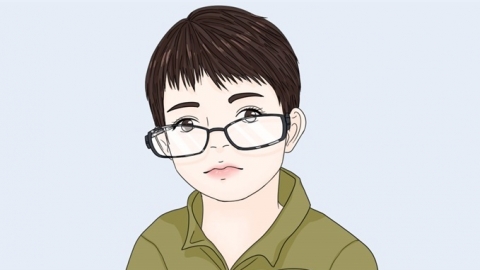What causes amblyopia in children?
In general, amblyopia in children may be caused by abnormal visual development during the critical period, congenital abnormalities in axial eye development, uncorrected refractive errors, strabismus, or congenital cataracts. It is recommended to seek medical attention promptly, identify the underlying cause, and receive appropriate treatment under a doctor's guidance. Specific explanations are as follows:

1. Abnormalities during the critical period of visual development: The first 0–6 years after birth represent the critical period for visual development. If a child’s eyes do not receive clear visual stimulation during this time, amblyopia may develop. Early visual training is essential—such as using amblyopia therapy devices or bead threading—for 15–20 minutes daily to promote visual function development.
2. Congenital abnormalities in axial eye development: If the eye axis is too short or too long, images on the retina become blurred, impairing visual development and leading to amblyopia. Under medical supervision, children should wear properly prescribed corrective glasses. Regular monitoring of axial length is necessary, with adjustments to lens prescriptions based on changes, ensuring clear retinal imaging.
3. Uncorrected refractive errors: High myopia, hyperopia, or astigmatism that remains uncorrected can result in chronically blurred retinal images, causing amblyopia. A cycloplegic refraction should first be performed to determine the exact prescription, followed by wearing eyeglasses or contact lenses. Occlusion therapy—covering the stronger eye—should also be used to strengthen the amblyopic eye.
4. Strabismus: Misaligned eye position leads to inconsistent images between the two eyes, prompting the brain to suppress input from the deviating eye, resulting in amblyopia. Initial treatment may involve occlusion therapy. If ineffective, surgical correction of strabismus may be required to rebalance the extraocular muscles and realign the eyes. Post-surgery, continued visual training helps consolidate treatment outcomes.
5. Congenital cataracts: Lens opacity blocks light from entering the eye, depriving the retina of visual stimulation and causing amblyopia. Early cataract removal via phacoemulsification is crucial to eliminate the cloudy lens. After surgery, an intraocular lens or corrective glasses should be fitted, along with amblyopia training to promote recovery of visual function.
Daily management includes limiting children’s screen time to no more than 20 minutes per session, maintaining proper reading and writing posture, and ensuring sufficient outdoor activity. Children should undergo regular vision check-ups every 3–6 months for early detection and timely intervention, supporting healthy visual development.




